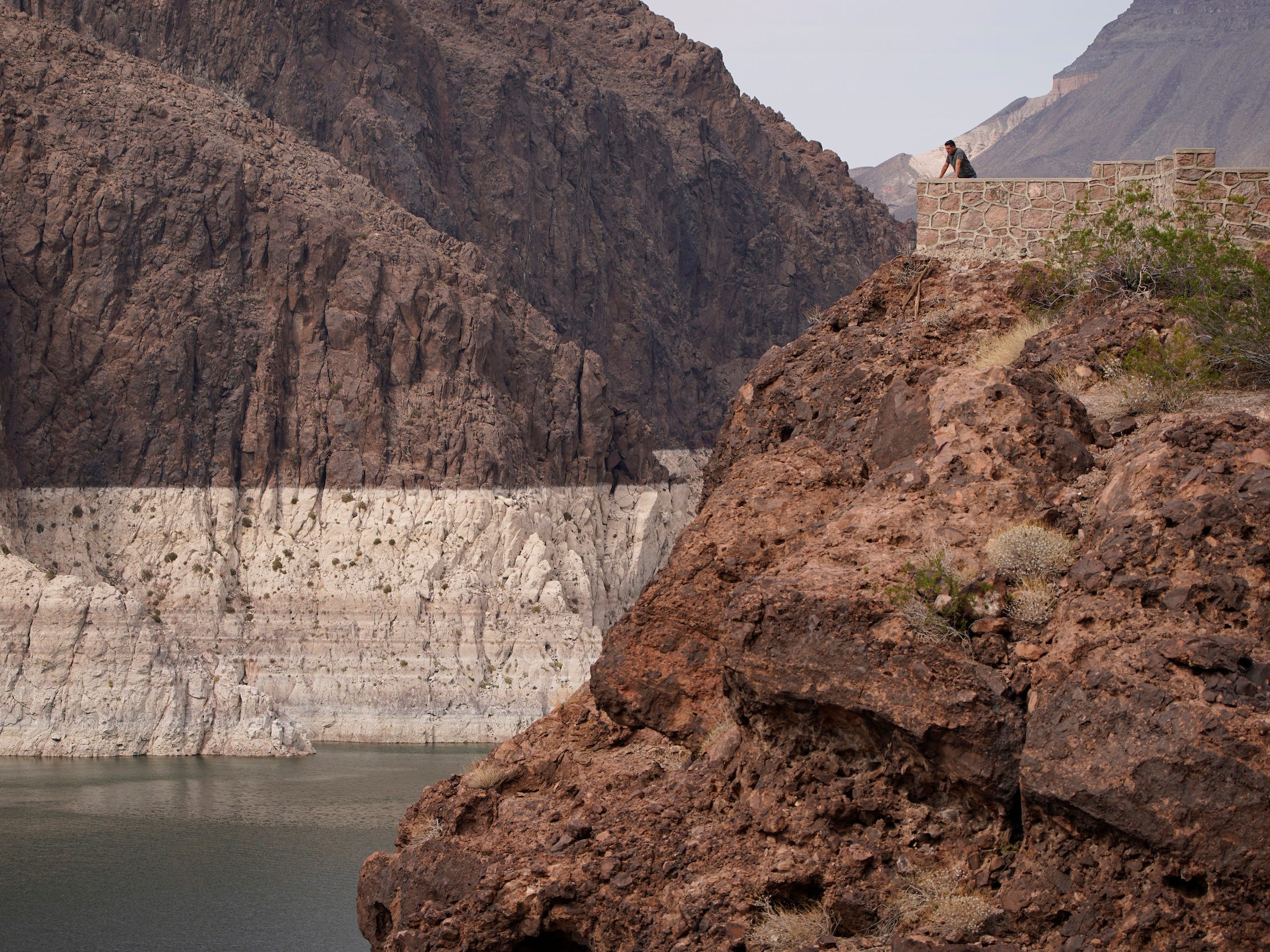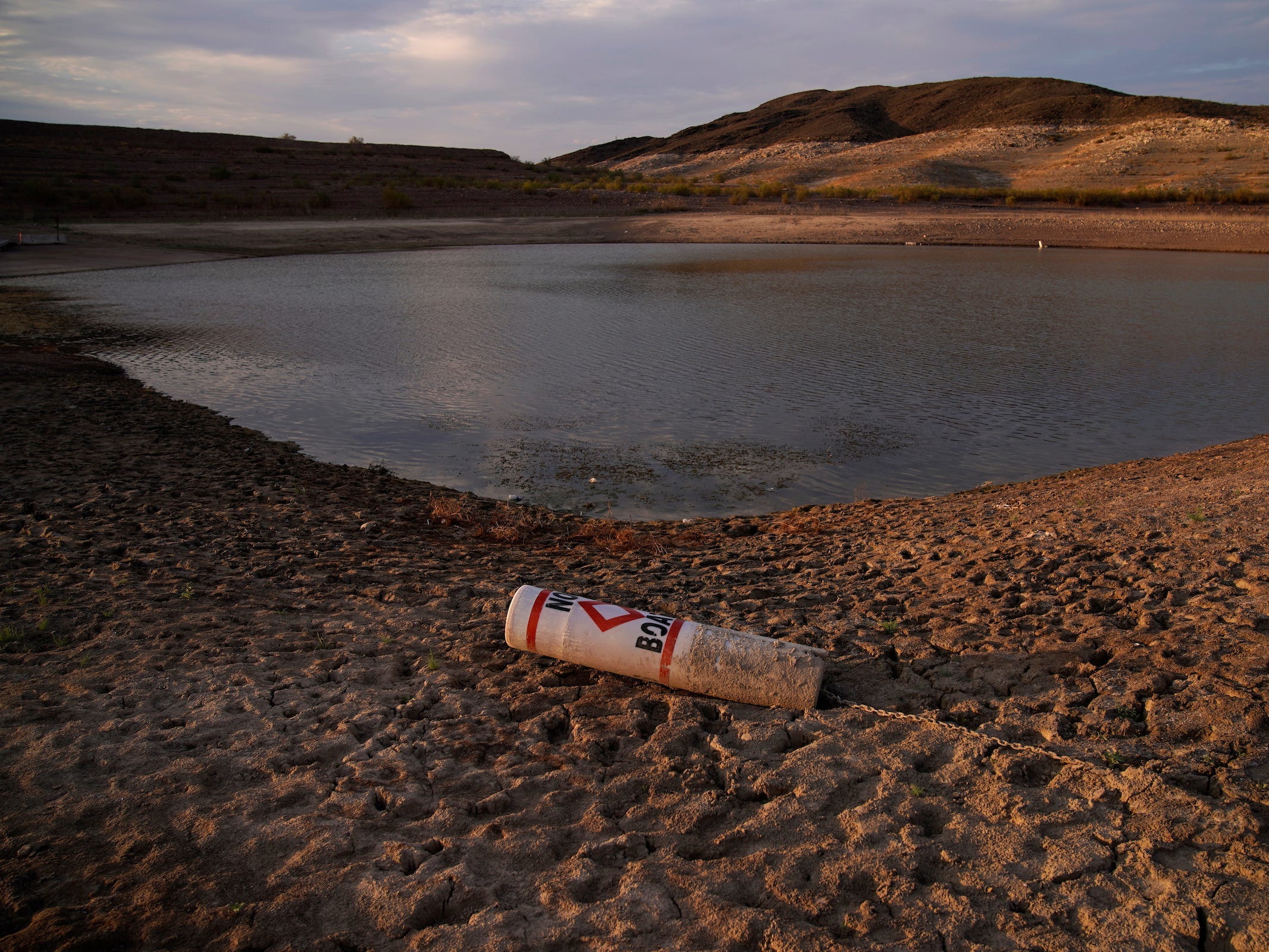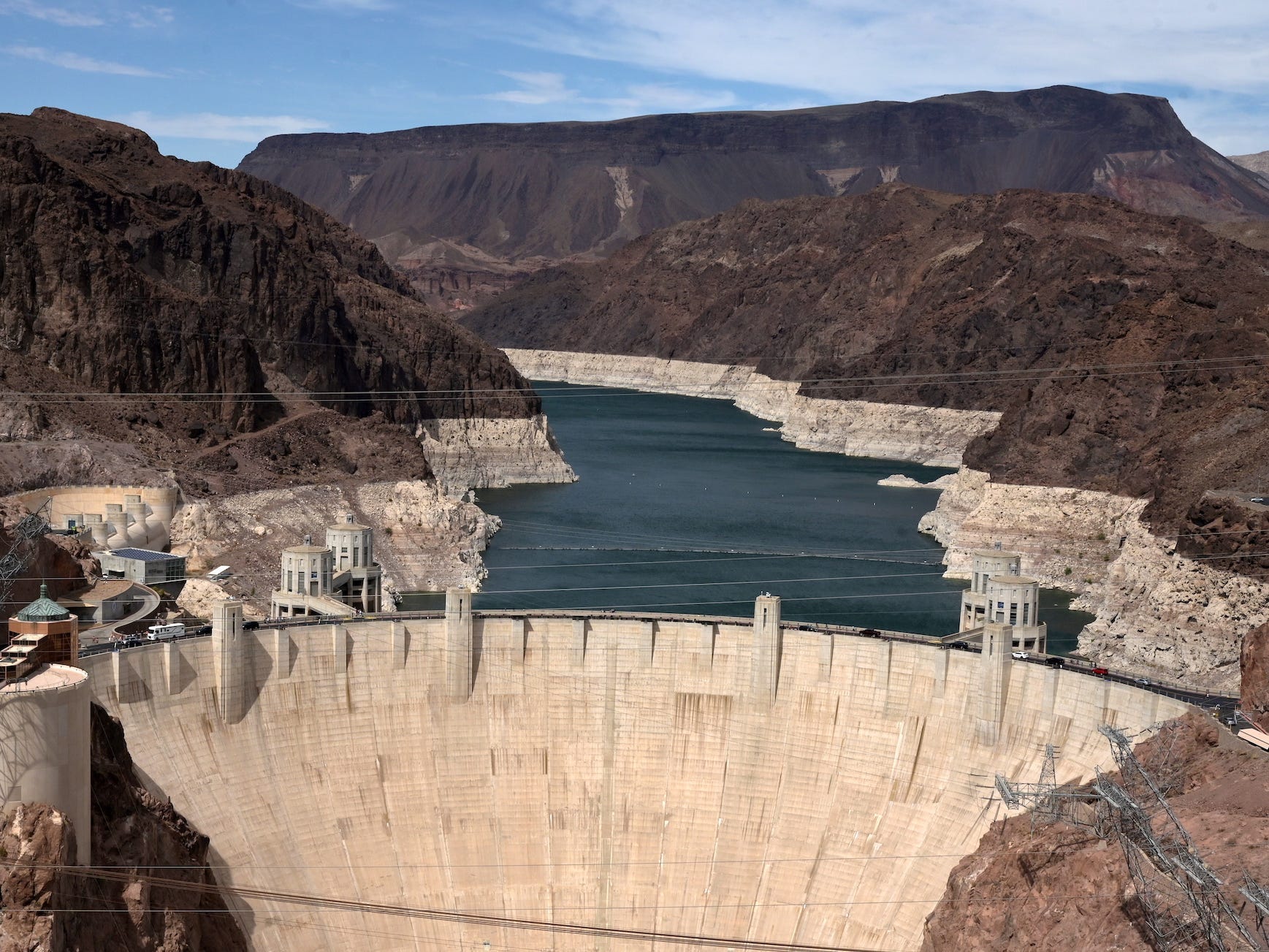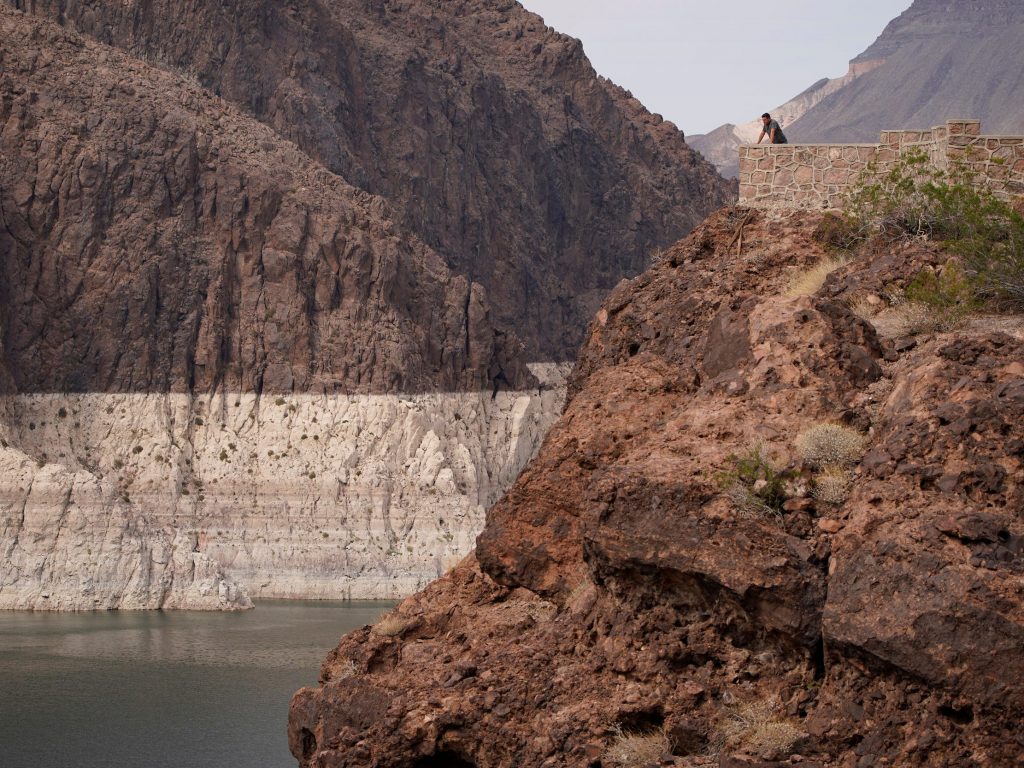
John Locher/AP Photo
- The US government has declared a water shortage on the Colorado River for the first time ever.
- Because Lake Mead is at a record low, Arizona and Nevada face water cut-backs in January.
- The US West is in a historic drought, but will likely get drier as the climate crisis unfolds.
- See more stories on Insider's business page.
For the first time ever, the US federal government has declared a water shortage on the Colorado River.
That's because Lake Mead, the nation's largest reservoir, is lower than it's ever been. It provides water to 25 million people across Arizona, Nevada, California, and Mexico, but as of Monday it's at just 1,067 feet above sea level – about 35% full.
The federal water-shortage declaration means that Arizona and Nevada will face mandatory water cut-backs in January. The cuts will mostly affect farmers in Arizona; the state will lose about one-fifth of the water it normally gets from the river, according to The Associated Press.
"It's very significant," Brad Udall, senior water and climate scientist at Colorado State University, told CNN. "It's something that those of us in the climate community have been worried about for over a decade, based on declining flows due to climate change."

John Locher/AP Photo
The US is experiencing its worst drought in the 20-year history of the US Drought Monitor, which tracks such conditions across the country. Last week, 26.5% of the country was in "extreme" or "exceptional" drought.
Such droughts will probably become more common and more intense as global temperatures continue to rise in the coming decades, according to a new report from the UN's Intergovernmental Panel on Climate Change last week. Rising temperatures will also reduce the snowpack that would normally replenish the Colorado River every year. That could lead to more severe water cutbacks.

Bridget Bennett/Reuters
The water-shortage declaration came with an August report from the US Bureau of Reclamation, which projected that Lake Mead would not rise back above 1,075 feet by January. Under a set of Colorado River guidelines established in 2007, that low forecast is considered a shortage condition.
The new restrictions for Arizona and Nevada are the first tier of cuts under those guidelines.

